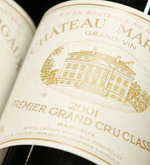vintage 2010 1 April 2011
Bordeaux 2010: Alcohol is threatening Bordeaux style, say winemakers
- Friday 1 April 2011
- by Panos Kakaviatos
- Comments
Merlot's alcohol levels have become so high in Bordeaux that there is a danger that regional character will be lost, top oenologists say.
In both the 2010 and 2009 vintages it was common to see Merlots surpass 15% alcohol, a situation Didier Cuvelier, owner of Chateau Leoville Poyferre in St Julien , finds ‘disturbing’.
In the Medoc, one of the reasons for planting Merlot had been because it ripened better than Cabernet Sauvignon, Cuvelier said.
‘But more recently, the Merlot has got so high in alcohol that we run the risk of losing the Bordeaux style,’
While all varieties have seen higher alcohol levels, Merlot’s susceptibility to ripen quickly and attain the highest alcohol levels makes it more of a challenge, consultant Denis Dubourdieu said.
A string of very good vintages since 2000 have meant there ‘has been no need to chaptalise, so sugars are naturally there and that is a good thing.’
But he noted the tendency for properties on the Right Bank to strive for greater concentration of sugars in the grapes by techniques such as leaf removal, which results in small and concentrated grapes.
Later picking – sometimes even after the Sauternes harvest in October – was becoming more common, Dubourdieu, who also owns the Barsac estate Chateau Doisy Daene, said.
‘There is a race towards concentration, to please many critics,’ he said. ‘I have been a consultant for 30 years; I have spent the first 20 years telling people not to harvest too early; in the last 10 years I have told them not to harvest too late.’
Jean Claude Berrouet, formerly at Petrus and now winemaking director for various estates in Pomerol, said in his 40-year career he has seen alcohol rise between 2 and 2.5 degrees.
He argues that yeasts that produce less alcohol may be a solution, but he cautioned against the use of slower-ripening grape clones, because fewer clones would limit the potential variety of grapes in a vineyard.









